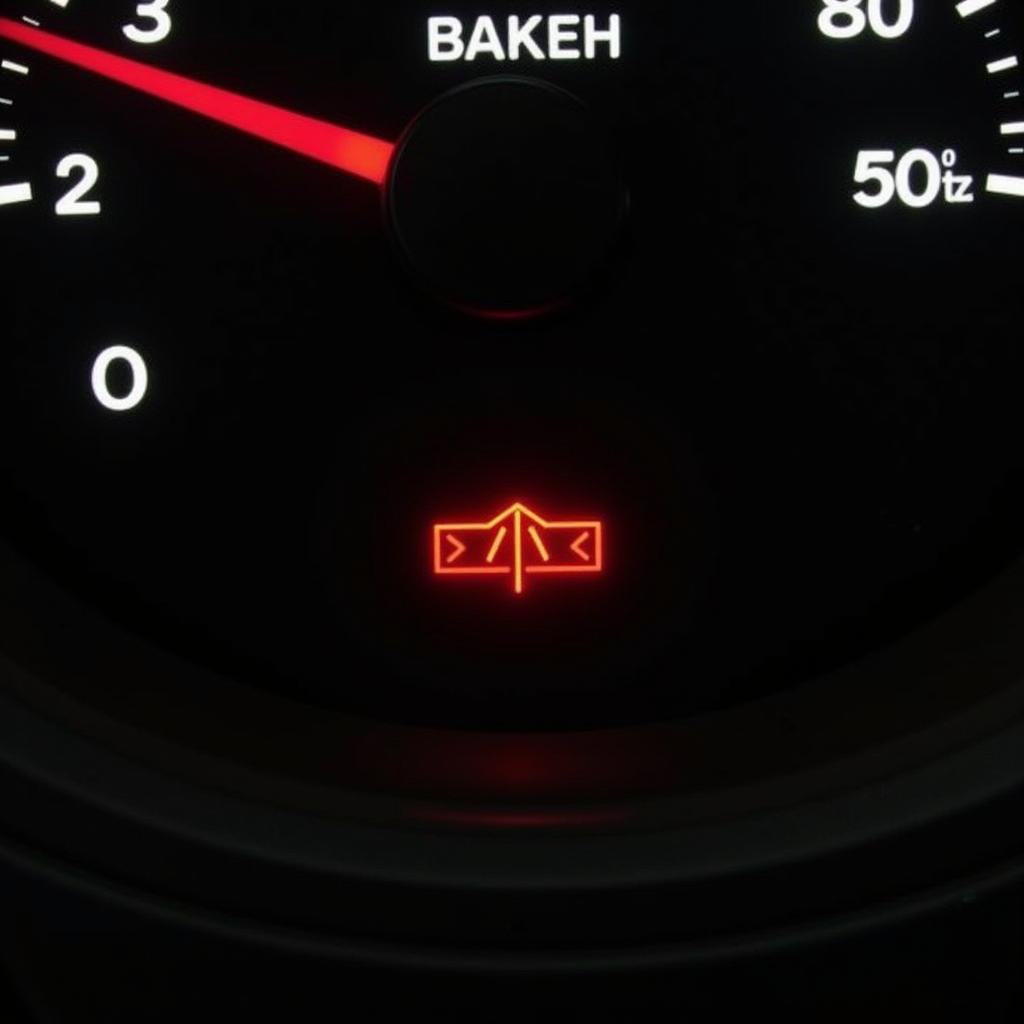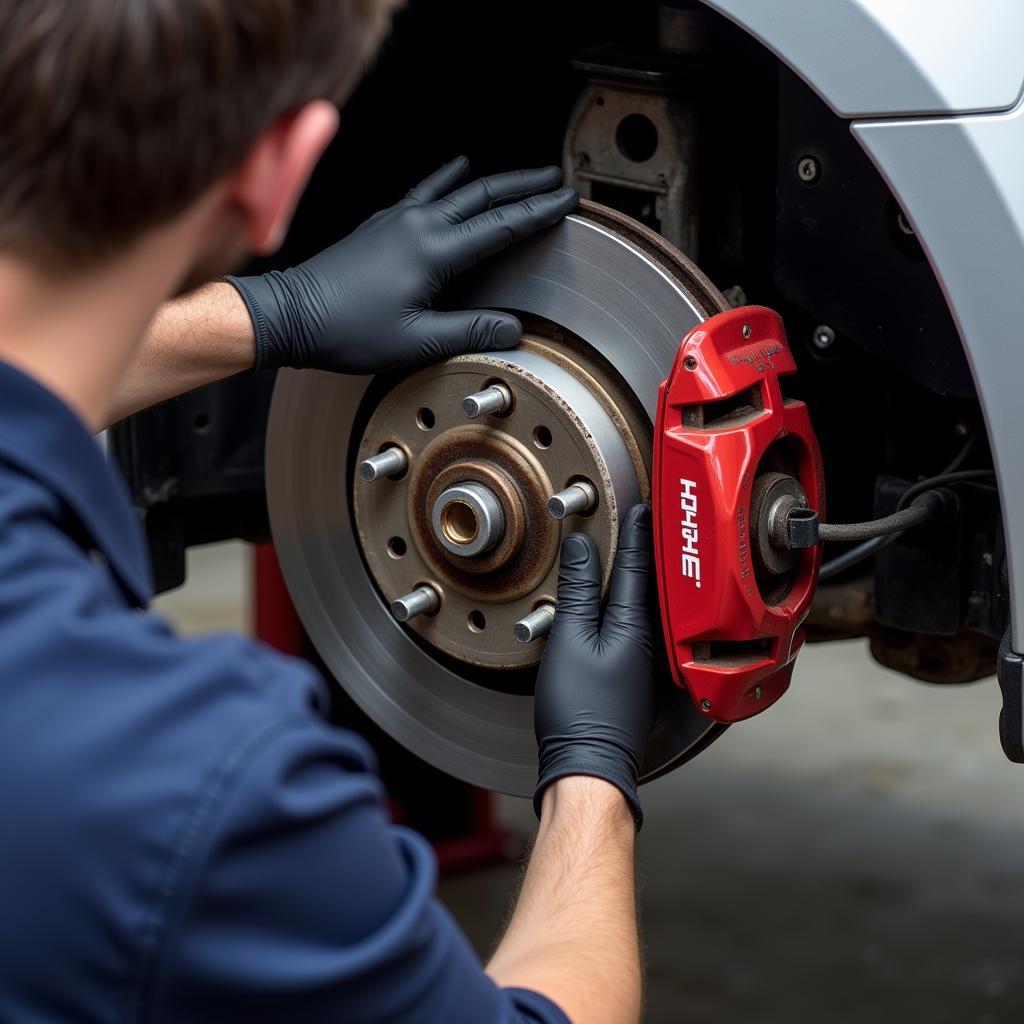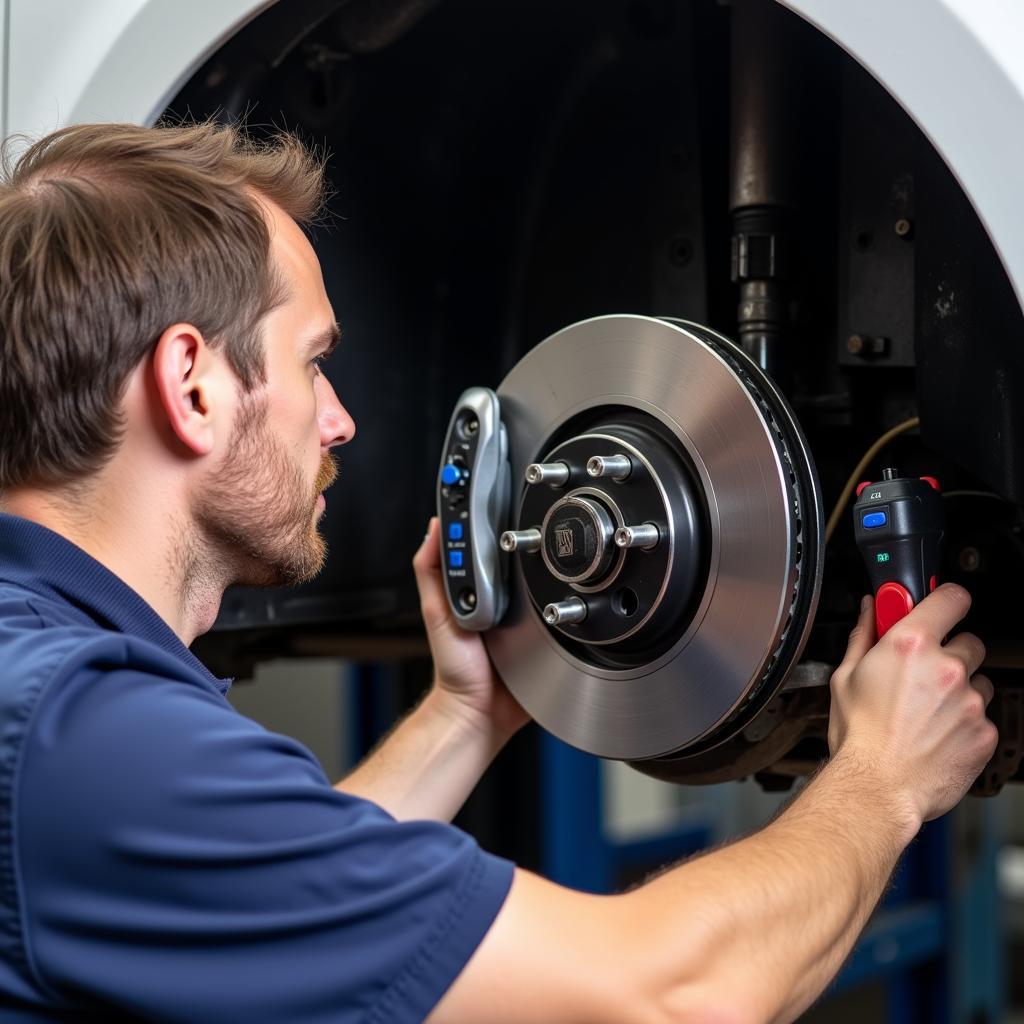The brake warning light on your Seat Alhambra dashboard is a crucial safety feature. When illuminated, it signals a potential problem within your braking system that requires immediate attention. Ignoring this warning light could lead to brake failure and dangerous driving conditions. This article provides a comprehensive guide to understanding the different causes of a Seat Alhambra brake warning light and outlines the steps you can take to diagnose and resolve the issue.
Common Causes of a Seat Alhambra Brake Warning Light
Several factors can trigger the brake warning light in your Seat Alhambra. These range from minor issues like worn brake pads to more serious problems with the braking system’s hydraulics.
Here’s a breakdown of the most frequent culprits:
- Worn Brake Pads: Brake pads are designed to wear down over time. When they reach a certain thickness, a sensor embedded in the pad triggers the warning light, indicating the need for replacement.
- Low Brake Fluid Level: Brake fluid is essential for transmitting force from the brake pedal to the wheels. A leak in the braking system can cause the fluid level to drop, activating the warning light.
- Faulty Brake Light Switch: The brake light switch activates your brake lights when you press the brake pedal. A malfunctioning switch can disrupt the brake light circuit, sometimes triggering the brake warning light.
- ABS Sensor Issue: The Anti-lock Braking System (ABS) prevents wheel lockup during hard braking. A faulty ABS sensor can disrupt the system’s operation, illuminating the warning light.
- Master Cylinder Problems: The master cylinder is the heart of the hydraulic braking system. If it develops a leak or internal fault, it can compromise braking performance and trigger the warning light.
- Parking Brake Engaged: Sometimes, the simplest explanation is the most likely. If your parking brake is even slightly engaged, it can trigger the warning light.
Diagnosing the Problem
 Seat Alhambra Dashboard with Brake Warning Light
Seat Alhambra Dashboard with Brake Warning Light
Identifying the root cause of the brake warning light is the first step towards a solution. Here are some diagnostic tips:
- Check the Parking Brake: Ensure the parking brake is fully disengaged. Even a slight engagement can trigger the light.
- Inspect Brake Fluid Level: Locate the brake fluid reservoir under the hood and check the fluid level. If it’s below the minimum mark, there might be a leak in the system.
- Visual Inspection of Brake Components: Look for any visible signs of damage or leaks in the brake lines, hoses, calipers, and brake pads.
- Consult a Mechanic: If you are unable to pinpoint the issue visually or are uncomfortable working on your car’s braking system, it’s best to consult a qualified mechanic. They have the expertise and tools for a comprehensive diagnosis.
“A visual check can often reveal obvious issues like leaking brake fluid or extremely worn brake pads,” says Tim Miller, a certified automotive technician with over 15 years of experience. “However, more complex problems often require specialized diagnostic equipment.”
Resolving the Issue
 Replacing Brake Pads on a Seat Alhambra
Replacing Brake Pads on a Seat Alhambra
The solution depends entirely on the diagnosed problem.
- Worn Brake Pads: Requires replacement of brake pads, ideally as a set for both wheels on the same axle.
- Low Brake Fluid: Address the leak’s source before refilling the brake fluid to the recommended level. This might involve replacing brake lines, hoses, or other components.
- Faulty Brake Light Switch: Usually necessitates replacing the switch, a relatively straightforward procedure.
- ABS Sensor Problems: May require cleaning the sensor or replacing it entirely if it’s faulty.
- Master Cylinder Issues: Depending on the severity, it might require repairing or replacing the master cylinder.
- Parking Brake Adjustment: If the parking brake cable is too tight, it may need adjustment.
“Never ignore a brake warning light,” warns Miller. “Addressing brake issues promptly ensures your safety and prevents potentially costly repairs down the line.”
Frequently Asked Questions
What does the brake warning light look like?
The brake warning light is usually a circle with an exclamation mark (!) or the word “BRAKE” inside. It typically illuminates in red.
Can I drive with the brake warning light on?
It’s highly discouraged. Driving with a lit brake warning light puts your safety at risk. Have your vehicle inspected and repaired as soon as possible.
What if the brake warning light comes on and off intermittently?
Intermittent illumination suggests a potential electrical issue or a loose connection. It’s crucial to have this checked by a mechanic.
How often should I change my brake pads?
Brake pad lifespan varies depending on driving style and conditions. As a general rule, consider having them checked every 12,000 miles or annually.
Can I add brake fluid myself?
Yes, but ensure you use the correct type of brake fluid specified in your Seat Alhambra’s owner’s manual.
Conclusion
 Mechanic Inspecting Seat Alhambra Brake System
Mechanic Inspecting Seat Alhambra Brake System
The brake warning light in your Seat Alhambra is a vital safety feature. Understanding its causes and taking prompt action can prevent potentially dangerous situations. Whether it’s a simple fix like replacing worn brake pads or a more complex issue requiring professional attention, addressing the problem immediately ensures your safety and the optimal performance of your Seat Alhambra. Remember, when it comes to brakes, erring on the side of caution is always the best approach.

